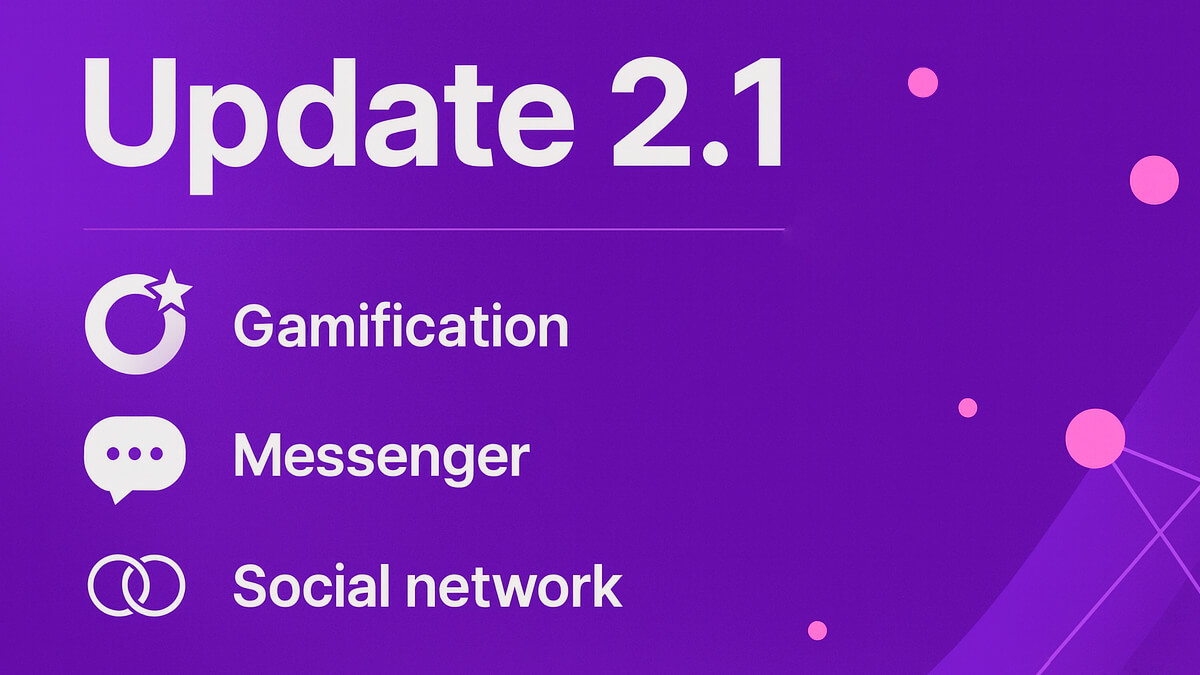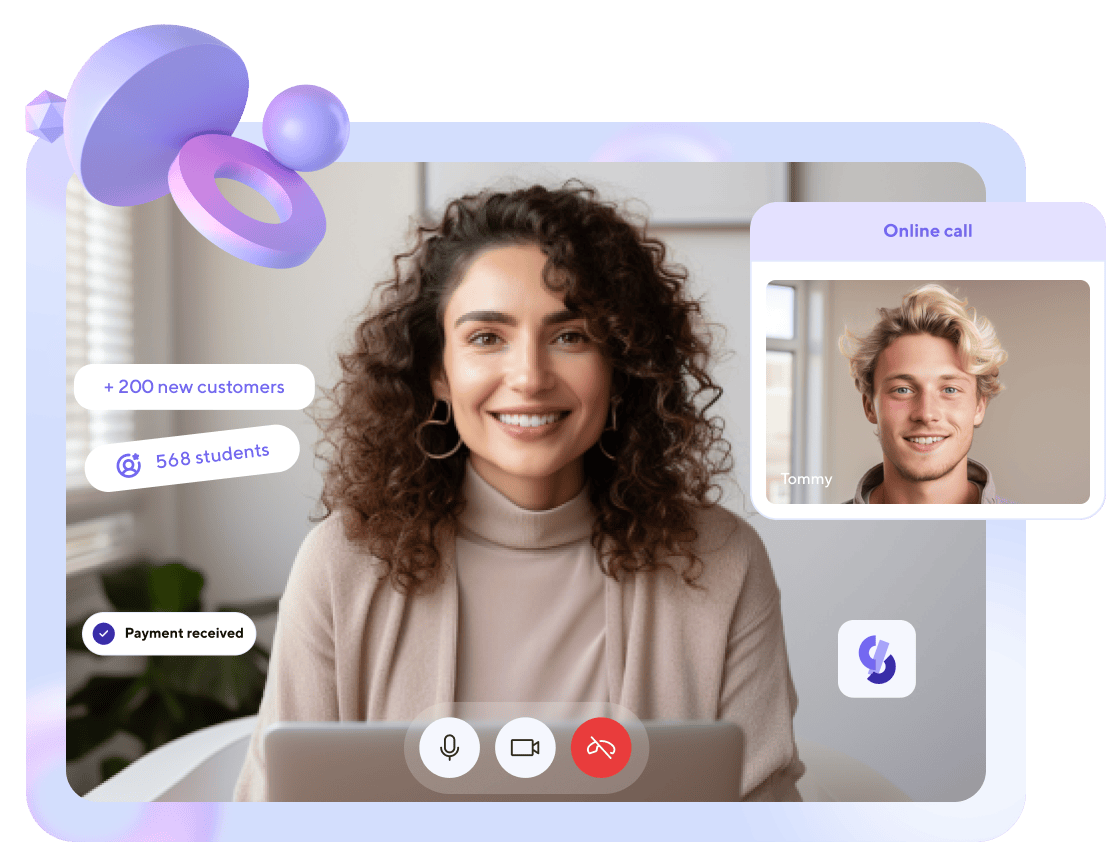What Will Make Your Course Memorable: The Formula for a Recognizable Brand

Today online education is an ocean with thousands of courses. It is easy to get lost in this space: new projects appear every day, competition grows, and a student’s attention is the most valuable resource. Why do some schools gradually turn into brands while others remain “just another course” that is quickly forgotten? The answer often lies not only in the quality of materials or the expertise of instructors. The key is how easily people recognize you, distinguish you among dozens of similar ones and, most importantly, remember you.
Even the best content can “dissolve” in the feed if it lacks character, style and a clear identity. An online course today is more than lectures and homework. It is the experience, emotion and value a student receives during learning. These are the things that determine whether your course becomes the one friends and colleagues recommend.
In this article we will look at 5 proven ways to make your course truly unforgettable. You will see that building a brand is not about big budgets or complex marketing strategies. It is about attention to detail, humanity in communication and the courage to be yourself.
1. Unique Visual Identity
Logo, colors, fonts, covers — all these shape the first impression of your course. Visual identity works just like clothing or personal style: before we even speak, people have already “read” something about us. If your course looks like hundreds of others, it will quickly get lost. But if it has its own character that shows through colors, icons, presentation design or even the visual language of social media, it starts to live as a separate brand.
It is important that all elements — from the logo to the video cover — work as a single whole. This creates a sense of integrity and professionalism. Imagine a student visiting the course website, subscribing to a newsletter and watching learning videos — if they see the same colors, style and symbols everywhere, it builds a recognizable image in their memory. This is how repetition works: the more often a person encounters a certain visual element, the stronger it becomes ingrained in their mind.
Practical tips:
- Define 2–3 main brand colors and use them everywhere — from presentations to social media posts.
- Choose one font for headings and one for body text.
- Create a set of templates: video covers, social media banners, presentation slides. This saves time and maintains a consistent style.
- Think about small details — unique icons, patterns or illustrations that will be associated specifically with your course.
Example: if your course is about creativity, the identity may include bright colors, dynamic shapes and unexpected combinations. If you teach financial literacy, it makes more sense to use restrained colors, clean lines and neat typography that inspires trust.
Unique identity is not about “making things look nice.” It is about creating a visual language that instantly signals to a student: “You are in the right place, inside this course.” The stronger this signal, the higher the chances your course will be remembered and recognized among others.
2. Clear Value Proposition
When a potential student sees your course, a simple yet crucial question appears in their mind: “Why this course?” If the answer is unclear or too vague, the person will quickly move on. In online education the choice is huge, and you have to compete not only with the quality of materials but also with your ability to clearly show value.
A value proposition is a concentrated answer to the question: “What exactly will I gain after completing the course?” It is not just a list of topics in the syllabus. It is about the result the student can apply in their life or work. For example, not “an English course” but “a course after which you will be able to confidently conduct a business meeting in English.” Not “a design course” but “a course after which you will build your first portfolio and find clients.”
Here it is important to avoid generic promises like “you will become successful” or “you will improve your knowledge.” They sound nice but provide no specifics. People do not buy knowledge, they buy change. They invest their time and money in a transformation: from point A (a problem, doubt, lack of skills) to point B (a result, confidence, new opportunities).
How to formulate a value proposition:
- Describe the student’s starting point. What problem do they face now? For example: “you are afraid of speaking in front of an audience,” “you don’t understand how to start working with advertising.”
- Show the final result. What change will they achieve after learning? “You will step on stage and present with confidence,” “you will launch your first advertising campaign with results.”
- Add specifics. How much time will it take? What tools will be used? For example: “In 6 weeks you will create your own website on WordPress without programming.”
- Support it with proof. This could be statistics of previous students’ success, testimonials or examples of real projects.
Let’s imagine two copywriting courses. The first one says: “You will learn to write texts for business.” The second says: “In 8 weeks you will learn to create texts that sell and prepare 5 ready-made cases for your portfolio.” Which one sounds more attractive? The second one — because it is specific and shows a clear result.
It is equally important that the value proposition is visible right away. It should be stated in the course title, in the first paragraph of the description, in promotional materials. A person should not waste time trying to figure out what you are offering.
Checklist for testing your value proposition:
- Does it describe a concrete result rather than just a process?
- Is it clear who exactly the course is for?
- Can the benefit be measured (for example, “you will launch your first project” instead of “you will learn how it works”)?
- Does it sound like a real promise you can deliver on?
A clear value proposition is the foundation of your brand. It helps a student not just choose a course but believe that here they will achieve the transformation they need. And when the result matches the expectation, the student becomes your best ambassador who recommends the course to others.

3. Tone of Communication
Imagine your course as a living person. How would it speak? Lighthearted and humorous, serious and well-reasoned, or perhaps inspiring change? The tone of communication is what shapes your brand’s personality and determines how students perceive you on social media, in emails and even within the learning materials.
Consistent style across channels
It is important that the voice of your course sounds the same across all touchpoints. If you joke and write casually on Instagram but address students in a dry and formal way in emails, they will feel a sense of inconsistency. It is like meeting a friend who laughs and tells stories in private, but at work suddenly pretends not to know you. Consistency builds trust: the student understands who they are dealing with and what to expect from the interaction.
Which tone to choose?
There are several common approaches:
- A friendly tone works if you want to remove barriers and create the feeling that the course is led not by a lecturer but by a mentor who explains complex things in simple words.
- An expert tone is suitable for fields where authority and confidence matter — for example, finance or medicine.
- An inspiring tone is effective where motivation is key: in courses on creativity, personal development, leadership.
Take a programming course as an example. If it is aimed at beginners, the tone can be friendly and supportive: “Don’t worry, even if you have never seen code before — we will go through everything step by step.” If the course is for experienced developers, the tone shifts to professional and concise: “We will get straight to practice and cover complex cases from real projects.”
Or consider a course on creative writing. Here an inspiring style may work: “You will discover a voice within you that you have never heard before and learn to write texts that touch the heart.”
Tone as a tool for motivation
Communication affects not only your image but also student motivation. The right tone in a newsletter or message can prevent someone from dropping out, give them strength to complete a challenging module or spark the desire to share their experience on social media. In fact, your voice accompanies the learner throughout the entire journey and creates the emotional background that determines whether the course felt like a dry set of facts or a vivid experience.
Ultimately, it is the tone of communication that helps a course brand become recognizable. You may have an excellent syllabus and beautiful identity, but if the brand’s “voice” sounds uncertain or inconsistent, students will not feel connected to you. And connection is what makes them return and recommend you to others.
4. Storytelling
Facts convince, but stories make people feel. In the world of online education, where courses often look similar in structure and content, storytelling becomes the tool that brings a brand to life. When you tell stories — about yourself, your students or the journey they go through in your school — you create an emotional connection. And emotion is always remembered better than dry information.
Stories about founders and instructors
It is hard to connect with faceless courses. Students are curious about who stands behind the program. Why did you decide to create this course? What challenges did you overcome yourself? What experience do you bring? This is not just a “biography” but a way to show the human side of your brand. For example, a marketing instructor might share how they failed their first ad campaign, but that very failure helped them understand how the market truly works. Such honesty makes the brand more relatable and builds trust.
Stories about students
The most powerful ones are real examples of transformation. These could be stories of students who started from scratch and managed to launch their own project, land a job or find self-confidence. It is important that the story does not sound like a polished testimonial but like a real journey with struggles, doubts and wins. When a potential student reads such a story, they see themselves in it and start to believe: “If she or he could do it, then I can too.”
Stories within the learning process
Storytelling can also be integrated into the course itself. Instead of abstract examples, use mini-stories to explain concepts. For instance, in a programming course you might describe how a developer wrote code that didn’t work at first and how they eventually solved it. In a leadership course you might tell the story of a manager who failed an important presentation but later learned how to motivate their team and achieve results. Such stories make learning vivid and relatable.
Examples for different courses
- Graphic design course. Instead of a dry task like “create a logo,” tell the story of a fictional client — a coffee shop looking for a new style. The student works in a realistic context and feels their work has meaning.
- Personal finance course. Here it makes sense to share stories of people who went from debt to building savings. Such stories not only teach but also inspire.
- Public speaking course. An instructor might share how they once feared the stage, shook before their first audience, but eventually found their own style. This makes their advice authentic rather than detached from real life.
Stories trigger empathy mechanisms in the brain. We do not just read or listen — we “live through” the journey with the character. And when people live through an experience, it leaves a mark in memory. That is why students may forget formulas or definitions but will surely remember the story that made them feel something.
Storytelling transforms your course from a set of knowledge into an engaging journey. It makes your brand recognizable because people remember not only what you teach but also how you teach it. And when stories resonate, students become your best promoters: they share them with friends, on social media and even in professional circles.

5. Student Experience
A course brand is shaped not only by logos or marketing materials. It is felt most strongly in the student’s experience during learning. How convenient, clear and engaging the course is determines whether it will be remembered as an inspiring journey or just another “mandatory checkbox.” And these impressions are what matter most when a student decides whether to recommend your course to others.
Onboarding as the first impression
The first days of learning are when attitudes toward the course are formed. If a student gets lost in instructions, cannot find the materials or feels “left alone with the platform,” they lose motivation before even starting. A well-designed onboarding removes this barrier. It could be a short welcome video, a navigation guide or even a warm email from the team with tips on where to begin. Such an approach creates a sense of care and sets the tone for a productive start.
We shared detailed tips on student onboarding in this article.
Support and feedback
Students value not only knowledge but also attention. Regular feedback from an instructor or mentor helps them stay on track, while support in a chat or Q&A sessions builds confidence. For many, this becomes the key advantage — the sense that their progress is being monitored and that help is always available. As a result, the course feels less like independent study and more like a shared journey.
Emotions within learning
The student experience is also shaped by small details that often go unnoticed at first. These could be humorous illustrations in assignments, unexpected interactive tasks, motivational reminders or simply a well-designed personal dashboard. When students feel comfortable and engaged, they sense that someone has cared for them. And this directly ties into the brand’s image — attentive, modern and human.
People may forget the exact topics you taught, but they will remember how they felt during the course. If the experience was comfortable, inspiring and motivating, your course will be remembered as something valuable and special. And this is the essence of a strong brand: not only what you say or show, but the emotions you evoke.
Conclusions
Online education today is a space of huge opportunities, but competition is intense. To ensure your course does not get lost among dozens of others, it is important to work not only on the curriculum but also on the brand image. Unique identity makes you recognizable at first glance, a clear value proposition shows what students will gain, tone of communication builds trust and gives character, storytelling adds emotion, and a thoughtful student experience turns learning into an engaging journey.
Your brand is not limited to a logo or nice words on a website. A true brand is born in the impressions of students. It is not about what you say about your course. It is about what students say after they finish. And those words, emotions and stories become the most powerful tools of promotion and trust.
Create courses that do not just teach but leave a lasting mark in memory. Then your brand will live longer than any advertising campaign.
Articles are good, but social media posts are faster!
Subscribe to us and be the first to receive tips and tricks
on promoting your online school!


Earn money on your knowledge and experience with
Softbook!
to the platform for setting up your own school!





